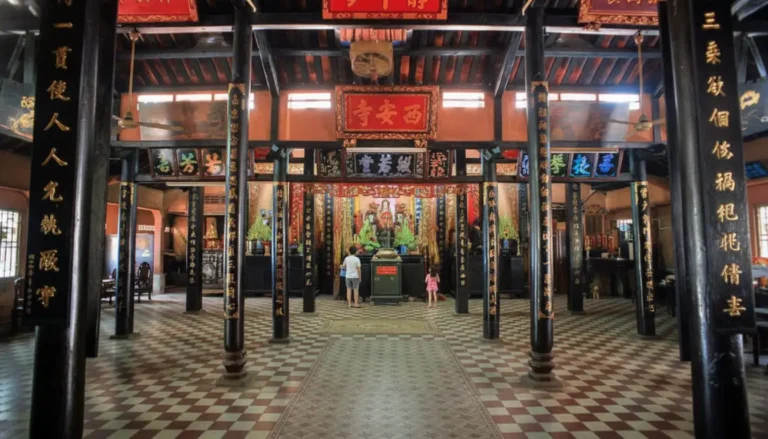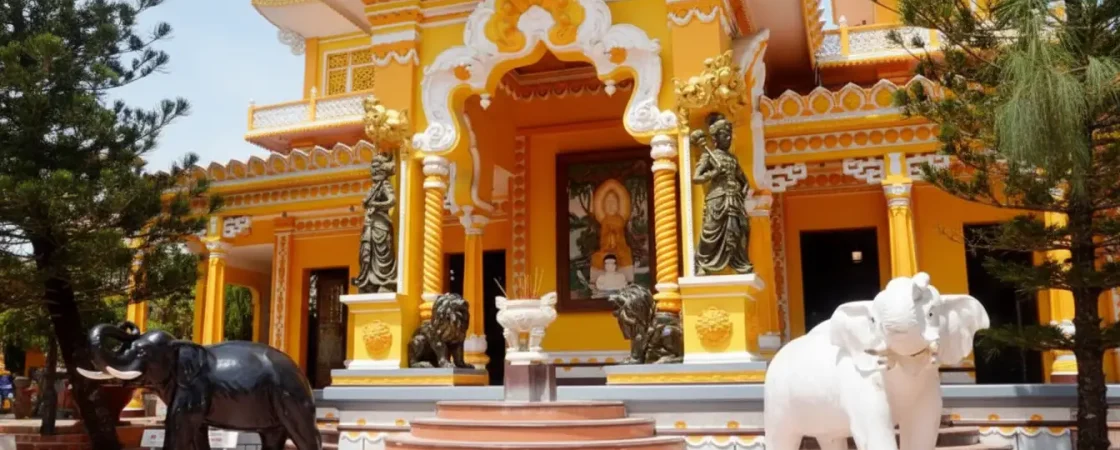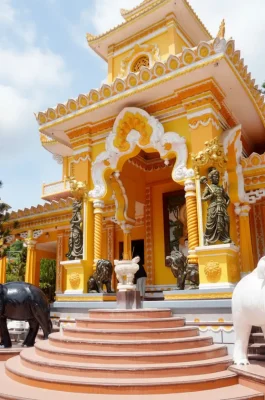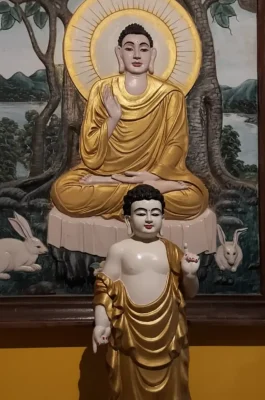Tay An Buddhist Temple: An Architectural Fusion at Sam Mountain
The Tay An Buddhist Temple (known locally as Tây An Cổ Tự) sits gracefully at the crossroads at the base of Sam Mountain (Núi Sam) in Châu Đốc City, An Giang Province. This national architectural and artistic relic stands out because it perfectly merges traditional Vietnamese temple architecture with distinctive Indian artistic influences. It forms a key part of the Sam Mountain spiritual complex, attracting both pilgrims and architecture enthusiasts.
A Temple Built for Peace and Prosperity
Governor Doãn Uẩn initially constructed the pagoda in 1847. He ordered the rebuilding of an earlier shrine using brick walls and tiled roofs. He named it Tây An Tự, meaning “Western Peace Temple,” expressing his wish for enduring peace and stability in the country’s western borderlands following successful military efforts. Later renovations in 1958 by the Venerable Thích Bửu Thọ gave the temple its current magnificent appearance.
Unique Fusion: The temple holds the recognition from the Vietnam Record Book Center as the first pagoda in the country to successfully combine Indian architectural style with traditional Vietnamese ethnic design.

Architectural Highlights: Where Cultures Meet
The temple’s design creates a strikingly vibrant and unique visual experience:
The Facade: The most defining feature is the main facade. It showcases three beautiful, rounded, onion-shaped roofs that immediately recall Indian stupa architecture. The vivid colors on the exterior create a harmonious and visually appealing entrance.
The Interior: In contrast to the exterior, the main hall retains the layout and decoration style of a traditional Vietnamese Buddhist pagoda. The interior features a multi-tiered roof and large wooden pillars.
Statuary: Tay An Pagoda is a treasury of statuary, housing over 200 large and small statues, mostly crafted from precious wood. These intricate carvings represent Buddha, Bodhisattvas, and Arhats, showcasing the artistic peak of Vietnamese sculpture from the 19th century. The temple grounds also feature statues of two large elephants—a white elephant with six tusks and a black elephant with two tusks—flanking the main path.

Spiritual and Visitor Information
Tay An Pagoda maintains a serene and spiritually significant atmosphere. It serves as a center for the Mahayana Buddhist sect.
Location: The temple is situated directly opposite the famous Ba Chua Xu Temple, making it an essential stop for pilgrims visiting Sam Mountain.
Address: Đường Đ. Vòng Núi Sam, P. Núi Sam, Châu Đốc, An Giang, Vietnam.
Entrance Fee: There is no entrance fee to visit the temple.
Visiting: The temple is generally open from dawn till dusk. We recommend visiting during the quiet morning hours to fully appreciate the tranquility and intricate architecture. Remember to wear modest clothing out of respect for the sacred site.









